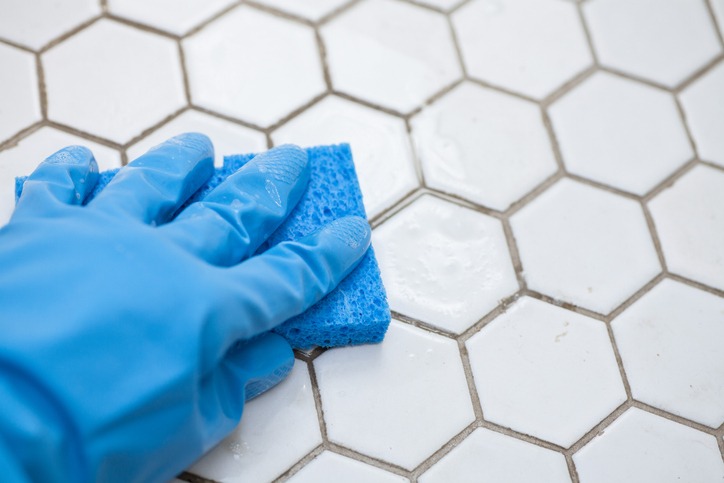Tile flooring adds a touch of elegance and functionality to any space, but to maintain its beauty and hygiene, proper grout maintenance is essential. Grout, the material between tiles, is susceptible to dirt, stains, and mould growth. In this comprehensive guide, we’ll delve into the fundamentals of tile grout maintenance. From effective cleaning techniques to proper sealing and preventing mould and mildew, you’ll learn how to ensure the longevity and pristine appearance of your tiled surfaces. For expert advice and quality products, consult a reputable tile supplier to optimize your grout care routine.
1. Cleaning Grout: The Basics
Regular cleaning is the foundation of effective grout maintenance. Dirt, spills, and grime can accumulate over time, dulling the appearance of your tiles. Start by sweeping or vacuuming the floor to remove loose debris. Next, create a cleaning solution by mixing water and a mild, pH-neutral cleaner. Avoid harsh chemicals that can damage the grout.
Use a soft-bristle brush or an old toothbrush to scrub the grout lines gently. Avoid using abrasive brushes that might scratch the tiles. Work in small sections to ensure thorough cleaning. After scrubbing, rinse the area with clean water to remove any residue. Dry the floor with a clean, absorbent cloth to prevent water spots.
2. Sealing Grout: Enhancing Protection
Sealing grout is a vital step in preventing stains and moisture infiltration. Porous grout can absorb spills and liquids, leading to discoloration and mould growth. Sealing creates a barrier that repels stains and keeps your grout looking fresh.
Choose a high-quality grout sealer recommended by your trusted tile supplier. Follow the manufacturer’s instructions for application, which typically involve applying the sealer evenly across the grout lines. Wipe off excess sealer from the tiles to prevent a hazy residue. Depending on the sealer type, you might need to reapply it every year or two to maintain optimal protection.
3. Preventing Mold and Mildew Growth: Hygiene is Key
Mould and mildew thrive in damp and humid environments, making bathrooms and kitchens common areas for their growth. Preventing mould and mildew from taking hold in your grout requires consistent cleaning and proper ventilation.
After showering or cooking, ensure proper ventilation by using exhaust fans or opening windows. Dry off wet surfaces promptly to prevent moisture accumulation. Regularly clean and dry bath mats and shower curtains, as they can harbour moisture and contribute to mould growth.
4. Deep Cleaning and Stain Removal: Special Cases
For stubborn stains or deep cleaning, a mixture of baking soda and water can work wonders. Create a paste and apply it to the stained grout lines. Let it sit for a few minutes, then scrub gently with a brush. Rinse with clean water and dry the area.
For tougher stains, consider using a commercial grout cleaner. Always follow the manufacturer’s instructions and spot-test in an inconspicuous area before applying to the entire floor. Consult your tile supplier for recommendations on suitable cleaning products.
5. Professional Maintenance: Periodic Care
Periodically, consider hiring professionals for thorough grout cleaning and maintenance. Professional services utilize specialized equipment and cleaning agents to remove deep-seated dirt and grime. This can rejuvenate your grout and restore its original colour.
6. Regular Inspections: Early Detection
Regularly inspect your grout for signs of wear, cracks, or discoloration. Addressing issues early can prevent further damage and the need for extensive repairs. If you notice areas that require attention, consult a tile supplier or a professional for guidance on the best course of action.
7. Consult a Trusted Tile Supplier: Expert Advice
When it comes to tile grout maintenance, seeking advice from a reputable tile supplier is invaluable. They can offer insights into the best cleaning products, sealers, and maintenance practices for your specific type of tiles and grout. Their expertise can help you achieve optimal results and prolong the life of your tiled surfaces.
In conclusion, mastering tile grout maintenance involves a combination of regular cleaning, proper sealing, mould prevention, and periodic care. By following these essential steps and seeking guidance from a reliable tile supplier, you can maintain the beauty and hygiene of your tile floors for years to come. With a consistent and well-informed approach to grout maintenance, your tiled surfaces will continue to shine and impress, enhancing the overall aesthetics of your space.
